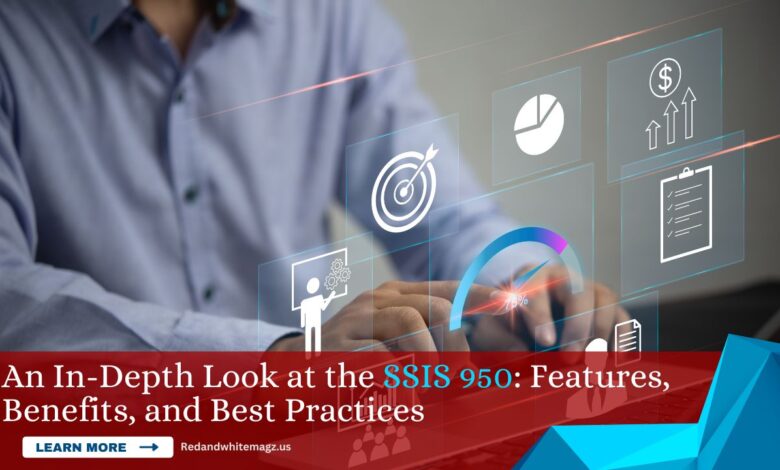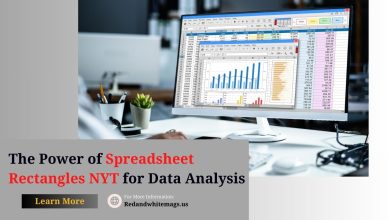An In-Depth Look at the SSIS 950: Features, Benefits, and Best Practices

The SSIS 950 is a sophisticated data integration tool designed to streamline the process of managing and analyzing large datasets.
With its robust capabilities for data extraction, transformation, and loading (ETL), the SSIS 950 helps organizations consolidate data from various sources into a unified system.
This integration is crucial for ensuring data accuracy, improving reporting efficiency, and making informed business decisions.
In this comprehensive guide, we will explore its key features, its benefits and potential drawbacks, and best practices for utilizing this tool effectively.
Whether you’re new to data integration or seeking to optimize your existing processes, understanding It can provide valuable insights and enhance your data management strategies.
What is the SSIS 950?
The SSIS 950 is a type of software used in the field of data integration and business intelligence. This tool is designed to help organizations manage and analyze large amounts of data efficiently.
With the It, users can perform various tasks such as data extraction, transformation, and loading (ETL).
This functionality is crucial for businesses that rely on accurate data for decision-making. By integrating different data sources into a single system, helps ensure that data is consistent and up-to-date, which is essential for making informed business decisions.
How Does the SSIS 950 Work?
The SSIS 950 operates through a series of steps to process data. It starts with data extraction, where information is pulled from various sources like databases or files.
Next, the data goes through a transformation process, where it is cleaned, sorted, or altered to meet specific needs.
Finally, the transformed data is loaded into a target system, such as a data warehouse. This process allows organizations to consolidate data from multiple sources into one place, making it easier to analyze and use for reporting purposes.
What Are the Key Features of the It?
It comes with several key features that enhance its functionality. One important feature is its ability to connect with various data sources, including databases, flat files, and cloud services.
It also offers advanced data transformation capabilities, allowing users to modify data in many ways to fit their needs.
Additionally, It supports scheduling and automation, which means tasks can be set to run at specific times without manual intervention. These features make It a powerful tool for managing and analyzing large datasets.
How Can the SSIS 950 Benefit Businesses?
It provides several benefits to businesses. First, it improves data accuracy by consolidating information from different sources and ensuring it is up-to-date. This accuracy is crucial for making reliable business decisions.
Second, It saves time by automating data integration processes, reducing the need for manual data handling. Third, it enhances reporting capabilities by providing a unified view of data, which makes it easier to generate insights and reports.
Overall, It helps businesses operate more efficiently and make data-driven decisions.
What Are the Potential Drawbacks of Using the SSIS 950?
While the SSIS 950 offers many advantages, there are also some potential drawbacks to consider. One possible issue is the complexity of the tool, which may require specialized knowledge or training to use effectively.
Additionally, It may have compatibility issues with certain data sources or systems, which could limit its functionality. Another consideration is the cost, as implementing and maintaining the It might be expensive for some organizations.
These factors should be weighed carefully when deciding whether It is the right choice for a business.
How Does the SSIS 950 Compare to Other Data Integration Tools?
The SSIS 950 is one of many data integration tools available on the market. Compared to other tools, it offers robust features for data extraction, transformation, and loading.
However, some tools might offer different strengths, such as better support for specific data sources or more advanced analytics capabilities.
When comparing the It to other options, it is important to consider the specific needs of the organization, including the types of data being used and the level of complexity required.
Each tool has its own advantages and limitations, so choosing the right one depends on the individual requirements of the business.
What Are the Best Practices for Using the SSIS 950?
To get the most out of the SSIS 950, following best practices is essential. First, it is important to carefully plan the data integration process, including defining clear objectives and requirements. This planning helps ensure that It is used effectively and meets the needs of the business. Second, regularly monitor and test the system to identify and address any issues that may arise. This proactive approach helps maintain data accuracy and system performance. Finally, provide training for users to ensure they are familiar with the It and can use it effectively.
By following these best practices, organizations can maximize the benefits and improve their data management processes.
What Are the Future Trends for SSIS Tools Like the SSIS 950?
The field of data integration is constantly evolving, and several trends could impact tools like the SSIS 950 in the future.
One trend is the increasing use of cloud-based solutions, which offer greater flexibility and scalability compared to traditional on-premises systems.
Another trend is the integration of artificial intelligence and machine learning, which can enhance data analysis and automate complex tasks.
Additionally, there is a growing focus on data security and privacy, which is becoming more important as data breaches and cyber threats become more common.
These trends could influence the development of the It and similar tools, leading to new features and improvements.
Pros and Cons of the SSIS 950
| Pros | Cons |
| Efficient Data Management: Automates data integration processes, saving time. | Complexity: May require specialized knowledge to use effectively. |
| Improved Accuracy: Consolidates data from multiple sources, ensuring accuracy. | Compatibility Issues: Might face issues with some data sources or systems. |
| Advanced Features: Offers robust data transformation and scheduling capabilities. | Cost: Implementing and maintaining the tool may be expensive. |
| Enhanced Reporting: Provides a unified view of data for better reporting. | Learning Curve: Users may need training to fully utilize the tool. |
This comprehensive guide aims to provide a clear and detailed understanding of the It, its features, benefits, drawbacks, and future trends, making it accessible to readers of all levels.
Frequently Asked Questions (FAQs) About the SSIS 950
What is the main purpose of the SSIS 950?
The SSIS 950 is designed to manage and integrate data from various sources. It helps organizations perform tasks such as data extraction, transformation, and loading (ETL).
This tool ensures that data from different sources is combined accurately and efficiently, which is crucial for making informed business decisions.
How does the SSIS 950 improve data accuracy?
The SSIS 950 improves data accuracy by consolidating information from multiple sources into a single system.
Transforming and cleaning the data before loading it into a target system, It helps eliminate inconsistencies and errors, ensuring that the data used for analysis and reporting is reliable.
Can the SSIS 950 connect with different data sources?
Yes, the SSIS 950 is designed to connect with various data sources, including databases, flat files, and cloud services.
This flexibility allows users to integrate data from multiple systems, making it easier to manage and analyze large datasets.
What types of businesses can benefit from using the SSIS 950?
Businesses of all sizes and industries can benefit from using the SSIS 950. It is especially useful for organizations that handle large volumes of data from different sources and need to ensure that the data is accurate and up-to-date for reporting and decision-making purposes.
Are there any training requirements for using the SSIS 950?
Using the SSIS 950 effectively may require some specialized knowledge or training. Users should be familiar with data integration concepts and the specific features of the tool to make the most of its capabilities. Training resources or support may be available to help users get up to speed.
What are some common challenges when using the SSIS 950?
Common challenges when using the SSIS 950 include dealing with its complexity, managing compatibility issues with certain data sources, and the potential cost of implementation and maintenance. Addressing these challenges may involve additional training, technical support, and careful planning.
How does the SSIS 950 compare to other data integration tools?
The SSIS 950 offers robust features for data extraction, transformation, and loading. Compared to other tools, it may provide specific strengths, such as advanced data transformation capabilities or scheduling features.
However, other tools might offer different advantages, such as better support for certain data sources or more advanced analytics.
What are some best practices for using the SSIS 950?
Best practices for using the SSIS 950 include planning the data integration process carefully, monitoring and testing the system regularly, and providing training for users.
These practices help ensure that the tool is used effectively and that data remains accurate and reliable.
Conclusion
The SSIS 950 is a powerful tool for data integration, designed to help organizations manage and analyze large volumes of data efficiently.
By automating the processes of data extraction, transformation, and loading, it improves accuracy, saves time, and enhances reporting capabilities.
While it offers many benefits, such as efficient data management and advanced features, it also comes with some challenges, including complexity and potential cost.
Whether you are considering implementing the SSIS 950 or are already using it, this guide provides a comprehensive overview to help you make informed decisions and maximize the value of this data integration tool.





